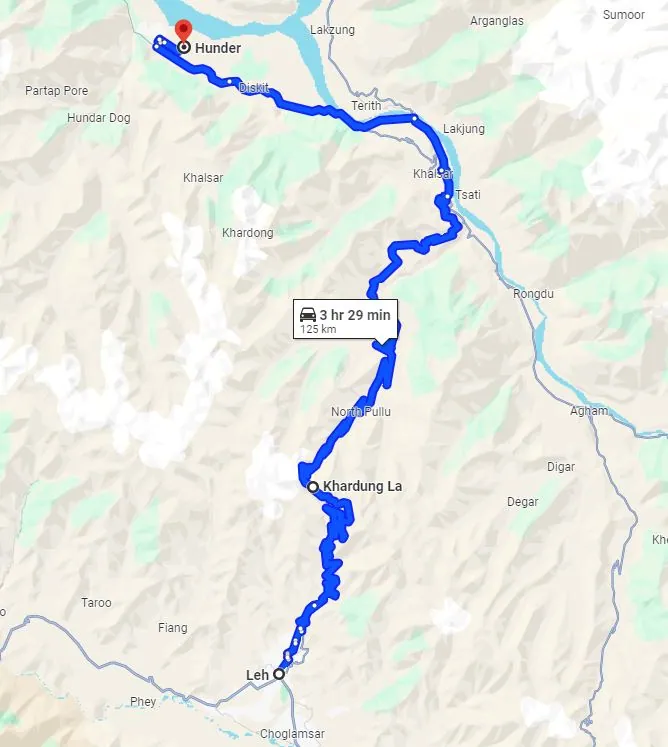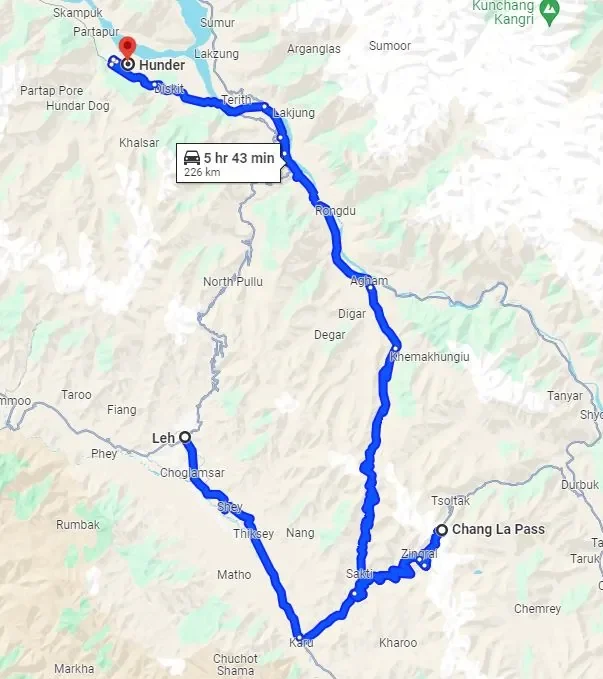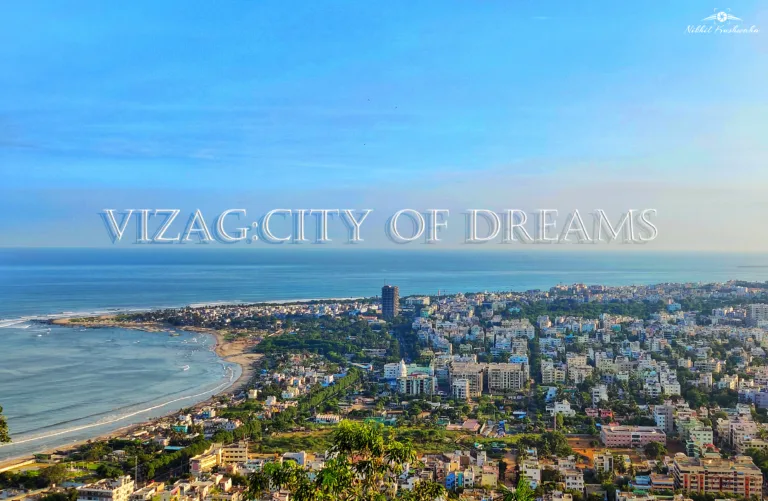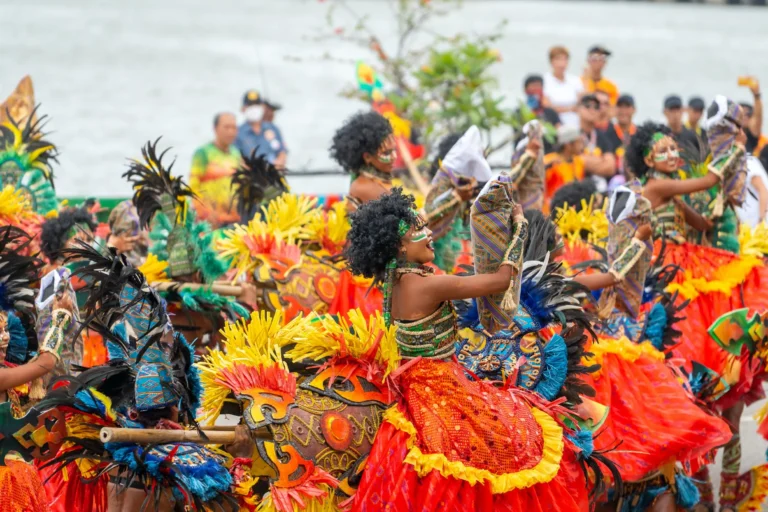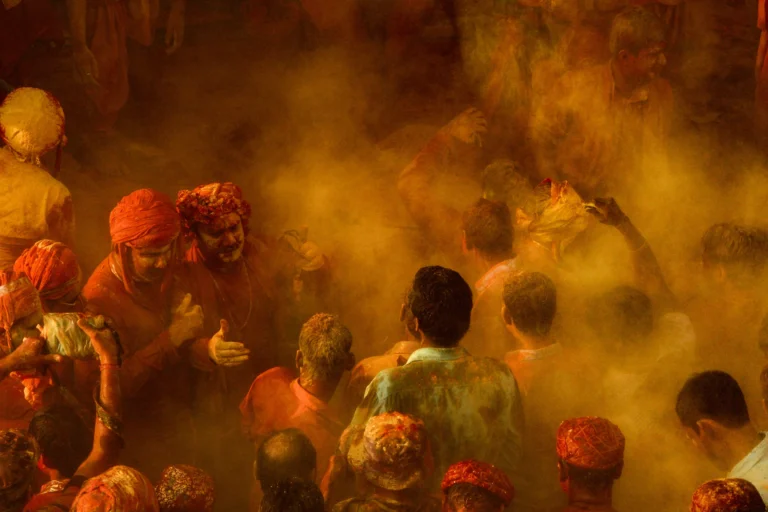Hunder, Ladakh travel guide
The Himalayan wonderland in India, Ladakh needs no introduction, nestled in the picturesque landscapes of Ladakh, Hunder stands as a gem waiting to be explored. This remote village, situated in Nubra Valley is a place with stunning views, unique cultural experiences, and adventures that will leave any traveler with a lifetime of memories. In this comprehensive travel guide, we will walk you through the enchanting world of Hunder and share our experience on what made us give this place the tag of “A must-visit destination for any adventurous soul”.
How to reach Hunder, Ladakh?
Reaching Hunder is an adventure in itself. From Leh city, Hunder is about a 5-6 hour drive by road (considering multiple stops for photoshoots, refreshments, and clear weather). The most common route that travelers choose to reach Hunder from Leh City is via the famous Khardung-La pass which is also the shortest route. The other route to reach Hunder from Leh City is via the Chang-La pass.
This journey is not only about reaching your destination; it’s also about soaking in the breathtaking views of the Ladakhi landscape – barren mountains, winding roads, the occasional fluttering prayer flags, snow-covered high peaks of Khardung-la pass, or the famous noodles/coffee stall on Chang-la pass.
Our journey from Leh to Hunder
View this post on Instagram
We chose to leave Leh City early morning at 7 am to reach Hunder via the Khardung-La pass as we wanted to have a dream come true moment of standing next to the huge milestone board that states “Welcomes you to The top of the world Mighty Khardungla“.
The winding road to Khardungla from Leh gave us adventure-filled memories of beautiful snow-covered mountains, the feel of chilling cold weather, the horror of slippery roads, and the sense of achievement on reaching Khardung-la pass which is now the second highest motorable pass in the whole world.
It took another 3-hour drive (subject to weather conditions) from Khardung-La pass to reach Hunder. On the way, we also saw the beautiful Shyok River, multiple army camps, and some Ladkahi wildlife like Tibetan wild ass, khyang, and Dong or Wild Yak.
Due to bad weather conditions, slippery roads, and multiple stops to take photos and refreshments, it took us around 8 hours to reach Hunder. We reached around 3 PM and checked in to our hotel.
Accommodation
Hunder offers a range of accommodation options to suit every traveler’s preference and budget. From luxury camps offering deluxe tents with all modern amenities to budget guesthouses providing a cozy stay, there’s something for everyone. Staying in a traditional Ladakhi homestay is also highly recommended for an authentic experience, where you can immerse yourself in the local culture and cuisine.
We stayed at: Hunder Eco Villa, which was a beautiful hotel and had a very warm and welcoming staff.
Click to Check Out this Hotel : Hunder Eco Villa
Exploring Hunder
Camel Safari in the Cold Desert
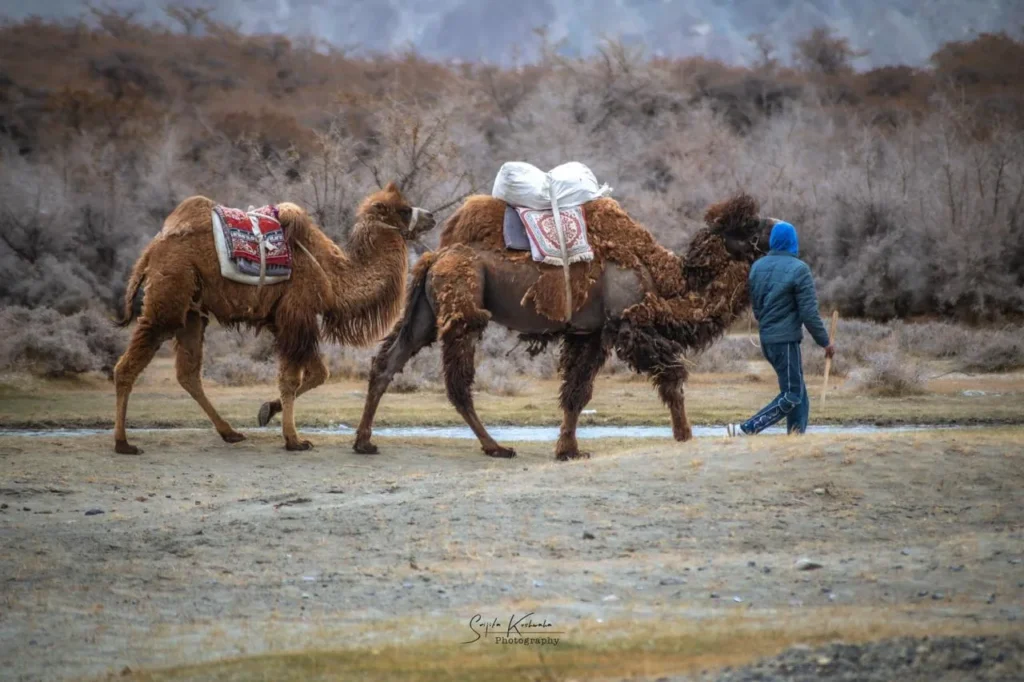
Out of many things Hunder is known for, The beautiful landscape of the cold desert sets the introduction for this amazing location. People come here to experience camel safari amidst the sand dunes. Here the Bactrian camels, known for their double humps offer a memorable ride through the desert, providing a glimpse into the region’s nomadic past.
Trekking and Camping
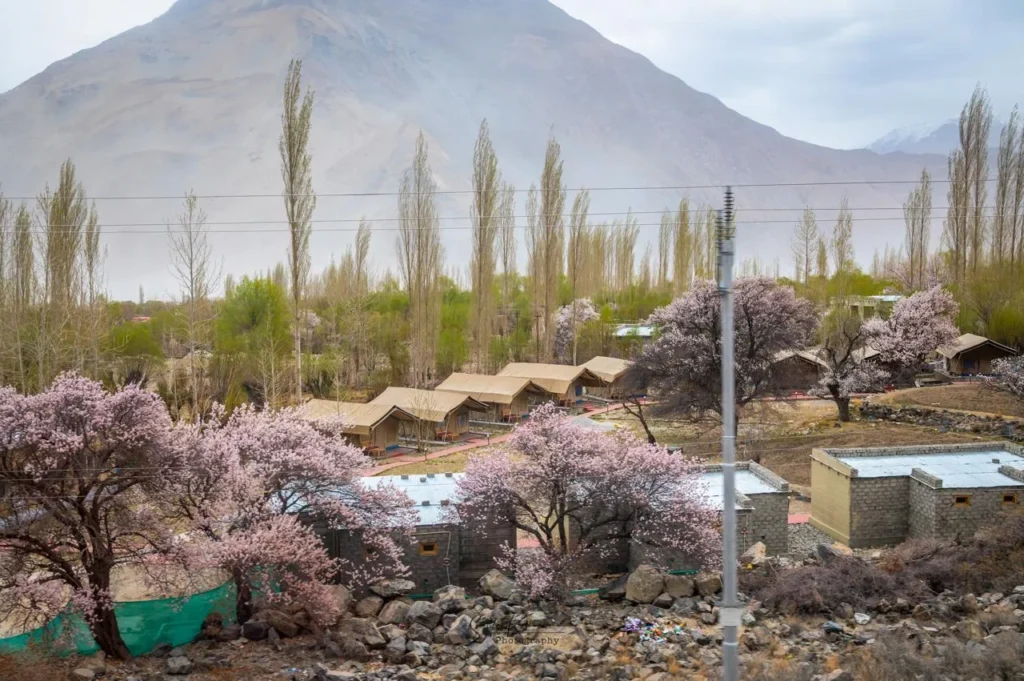
Hunder offers several trekking routes that lead to remote villages, high-altitude lakes, and majestic mountain passes. The popular trekking routes include the Nubra Valley trek, which takes you through beautiful landscapes decorated with colorful prayer flags and charming villages. Camping under the star-studded Ladakhi sky is an experience you’ll cherish forever. The peaceful surroundings, the fresh mountain air, and the warm hospitality of the locals make camping in Hunder an unforgettable experience.
Visit Diskit Monastery
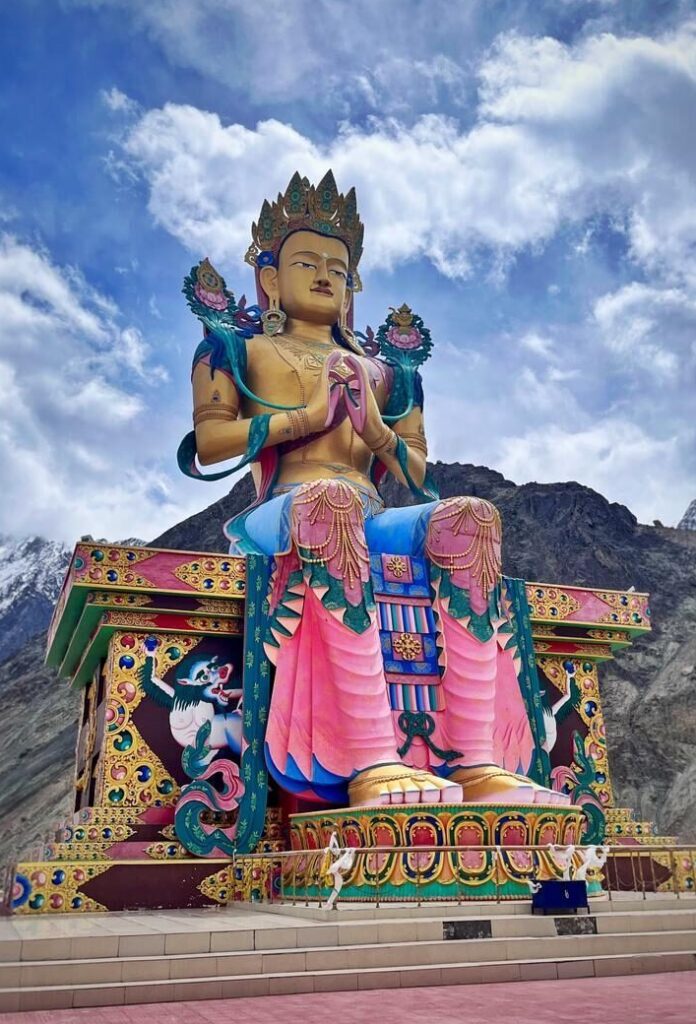
Diskit is the administrative center of Nubra Valley. Diskit Monastery also known as Diskit Gompa, is the oldest monastery in Nubra Valley that has existed since the 14th century. The monastery is famous for 108 foot-tall Maitreya Buddha statue. It is believed that Maitreya is the upcoming budha who will be born in the future and will carry forward the principles of Budhism. The statue faces the beautiful Shyok River and the stunning landscape of Nubra Valley can be seen from the base of the Maitreya Buddha statue.
Local Cuisine

Ladakhi cuisine is inspired by Tibetian,Kashmir and other central Asian dishes. While visiting Diskit, you will find many restaurants offering a wide variety of Ladakhi cuisine. Some of the dishes we would suggest are, Thupka (noodle Soup), Momos(steamed dumplings) and tingmo (steamed bread). Butter tea is also famous among tourists visiting Ladakh.
Best Time to Visit
The best time to visit is during the summer season, preferably during the month of May to September. The weather is pleasant and there are fewer chances of snow blocking the roads. However, if you want to experience snowfall and chilly cold weather, with careful planning you may visit Hunder during the month of February to April. However, chances are, the roads between Hunder and Leh may get blocked for hours extending to days depending on weather conditions.
Travel Tips

- It is very important to acclimatize your body for the higher altitude as the journey to Hunder includes passing through some of the world-renowned high passes like Khardung-La. Altitude Sickness and shortness of breath are common among tourists whose bodies don’t acclimatize to such higher altitudes.
Related Read: Altitude Sickness: What It Is? 5 Ways To Prevent It
- Dress appropriately and carry enough warm clothing, especially if you’re traveling in winter.
- Stay hydrated and drink plenty of water to prevent altitude-related issues.
- Respect the local culture and customs, especially when visiting monasteries and religious sites.

